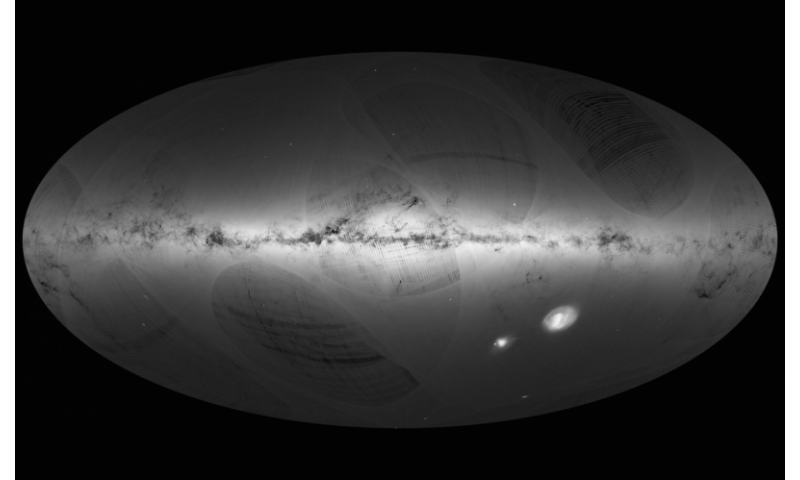Best of Last Week—New touchscreen technology, a new 3D map of the Milky Way and looking at the brains of short sleepers

(ScienceX)—It was another good week for physics as a team at the University of Sussex announced that they have developed new touchscreen technology based on patterning silver nanowire films. Also, a team at MIT cooled potassium atoms down to several nanokelvins, allowing them to see for the first time individual atoms avoiding each other or bunching up in pairs. And a pair of researchers revealed a riddle for our time—why doesn't the universe look different than it does if the rate of expansion has been constant?
In news from space, a team working at the Atacama Large Millimeter/submillimeter Array reported that they had observed a black hole hidden within its own exhaust, which may lead to revising theories regarding how black holes impact their host galaxies. Also, a new discovery shattered previous beliefs about Earth's origin—the team led by Audrey Bouvier found evidence that they claim proves that the Earth and other objects shared similar chemical origins. And the European Space Agency revealed a three-dimensional map of the stars in our galaxy that researchers there have created—they claim it is a thousand times more complete than any other map ever made.
In other news, a team of researchers from Case Western Reserve University and Columbia University described the unintended consequences of creating the world's first semi-synthetic organism—it made living cells more susceptible to damage from low doses of light. And a team led by researchers at Wellcome Trust Sanger Institute offered details of their study revealing how ionising radiation damages DNA and causes cancer. Also, another team at the University of Melbourne described a means of killing superbugs with star-shaped polymers, rather than antibiotics—perhaps leading to a way to overcome resistance issues.
And finally, if you are among the group of people who sleep less than the normal eight hours each night but believe it causes you no problems, you might want to look at a report by a team from the University of Utah who have been looking into the brains of habitual short sleepers and have found that things may not be what they seem.
© 2016 ScienceX